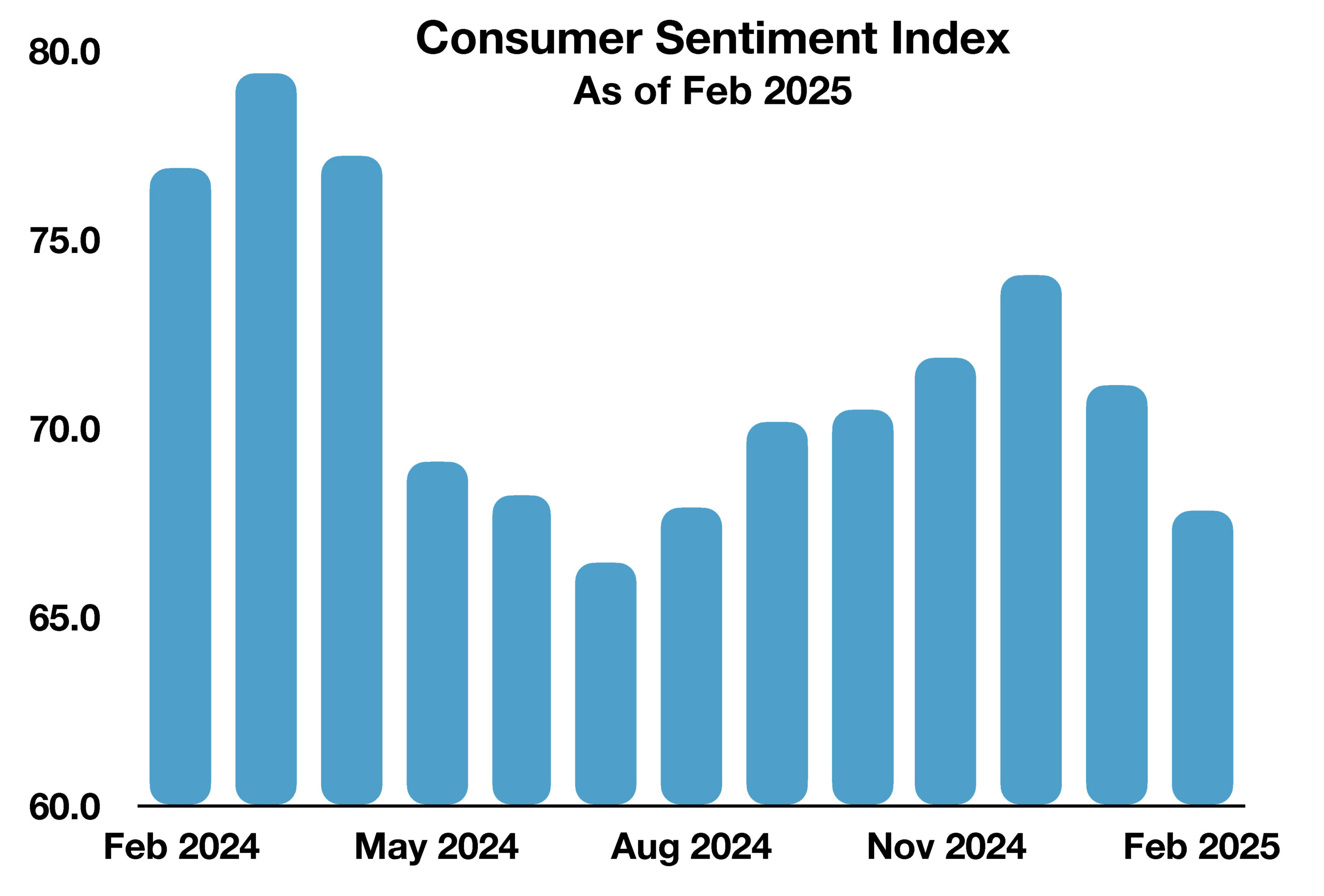

Stock Indices:
| Dow Jones | 42,270 |
| S&P 500 | 5,911 |
| Nasdaq | 19,113 |
Bond Sector Yields:
| 2 Yr Treasury | 3.89% |
| 10 Yr Treasury | 4.41% |
| 10 Yr Municipal | 3.31% |
| High Yield | 7.26% |
YTD Market Returns:
| Dow Jones | -0.64% |
| S&P 500 | 0.51% |
| Nasdaq | -1.02% |
| MSCI-EAFE | 17.30% |
| MSCI-Europe | 21.20% |
| MSCI-Pacific | 10.50% |
| MSCI-Emg Mkt | 8.90% |
| US Agg Bond | 2.45% |
| US Corp Bond | 2.26% |
| US Gov’t Bond | 2.44% |
Commodity Prices:
| Gold | 3,313 |
| Silver | 33.07 |
| Oil (WTI) | 60.79 |
Currencies:
| Dollar / Euro | 1.13 |
| Dollar / Pound | 1.34 |
| Yen / Dollar | 144.85 |
| Canadian /Dollar | 0.72 |
Macro Overview
Proposed tariffs by the administration led to elevated volatility and concern in the domestic and international markets. Markets globally are anxiously awaiting the implementation of new tariffs and what industries would be adversely affected. Many analysts and economists believe that the proposed tariffs are being used as a negotiation tool in order to prompt countries including Mexico, Canada and China to negotiate with the U.S. Should less than expected tariff implementations come to fruition, the long standing fears of heightened inflation are expected to dissipate.
The Core Consumer Price Index (CPI) which excludes volatile food and energy prices rose 0.2%, its smallest gain since July 2024 and less than the 0.3% increase expected by economists.
U.S. corporations shifted their worries from inflation to tariffs as the administration’s threat to impose tariffs on nearly every import altered plans for U.S. manufacturers and importers with operations overseas. More than 90% of North American manufacturing companies have relocated at least some production or supply chain activities overseas in the past five years.
Property insurance premiums are projected to rise across the country as claims on the California wildfires are expected to affect policy premiums nationwide. Insured losses from the California wildfires are estimated to be between $28 to $45 billion, making it one of the costliest fires in history. Hurricanes Helene and Milton in September and October of 2024 inflicted over $100 billion in losses.
Insurance companies are increasingly coming under scrutiny, following a study by the Federal Reserve which found that roughly 40 percent of affected households from fires in California over the past few years received insurance settlements lower than the estimated replacement costs. The underpayments amounted to an average of $200,000 to $300,000 per claim, less than the entitled amount under California law.
Newly elected Treasury Secretary Scott Bessent has made it clear that the administration’s primary focus with Treasuries is to bring the yield lower on the benchmark 10-year Treasury bond. Since longer term bond yields are determined by the markets, not the Fed, fiscal and expenditure initiatives are focal objectives in lowering yields.
Seven counties in Illinois voted to consider to secede from the state and move to Indiana. Legislation was introduced in January to establish a commission that would actually redraw state lines in order to accommodate the seceding seven counties. The Indiana Illinois Boundary Adjustment Commission was created to accomplish the secession. County secessions have occurred for decades across the country affecting various state boundaries.
A Brookings Institute study found that Americans with a four year college degree are living longer and healthier lives than those without a four year degree. The gap between the two has been widening according to the data collected since 1992. Attributable distinguishing factors include education about health, income, financial duress, and life style choices.
Sources: Brookings, Fed, Treasury Dept., Dept. of Commerce, BEA


